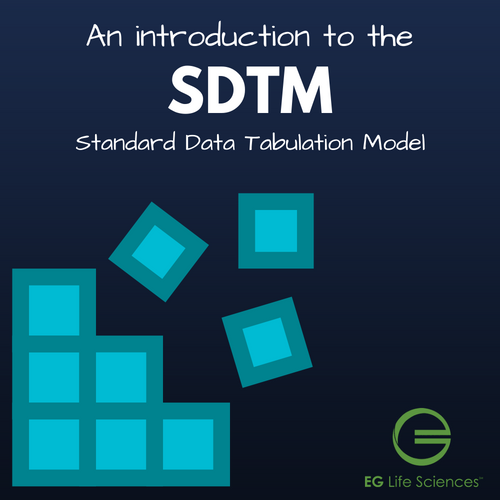For programmers who analyze clinical trial data in the pharmaceutical and biotechnology industries, the Standard Data Tabulation Model (SDTM) is incredibly important and valuable. Prepared by the Submission Data Standards (SDS) team of the Clinical Data Interchange Standards Consortium (CDISC), the purpose of SDTM is to organize, structure and format standard clinical trial tabulation datasets submitted to regulatory authorities such as the US Food and Drug Administration (FDA).
Use of these data standards is also expected to benefit industry by streamlining the flow of data from collection through submission, and facilitating data interchange between partners and providers.
Key Components of the SDTM Model
There are three SDTM General Observation Classes:
- Interventions
- Events
- Findings
Interventions capture investigational, therapeutic and other treatments that are administered to the subject (Exposure to Study Drug), coincident with the study assessment period (Concomitant Medication), or self-administered by the subject (Substance Use).
Each observation in a clinical trial can be described by a series of variables and each variable can be classified according to its Role. There are five major roles:
- Identifier
- Topic
- Timing
- Qualifier
- Rule
Observations about study subjects are collected for all subjects in a series of domains and data stored in SDTM datasets include both raw and derived values.
Other Datasets
There are also Special Purpose datasets involved, such as:
- Domains consisting of Demographics (DM)
- Comments (CO)
- Subject Elements (SE)
- Subject Visits (SV)
There are also Trial Design Model Datasets such as Trial Arms and Trial Elements, which represent information about study design but do not contain subject data.
Relationship datasets include RELREC and SUPP datasets.
Source: Study Data Tabulation Model Implementation Guide: Human Clinical Trials Version 3.2 and Version 3.1.3.
Three categories of variables are mentioned in the core column of domain models.
- Required: variables that are basic to identification of a record.
- Expected: Variables necessary to make a record useful in the context of a specific domain.
- Permissible: Variables if collected or derived should be used in a domain as appropriate.
In summary, SDTM can really assist in the formatting and streamlining of data when analyzing the results from clinical trials.
Do you have questions about SDTM or need assistance with your clinical trial data? We are happy to help! Reach out to us at solutions@eliassen.com.

